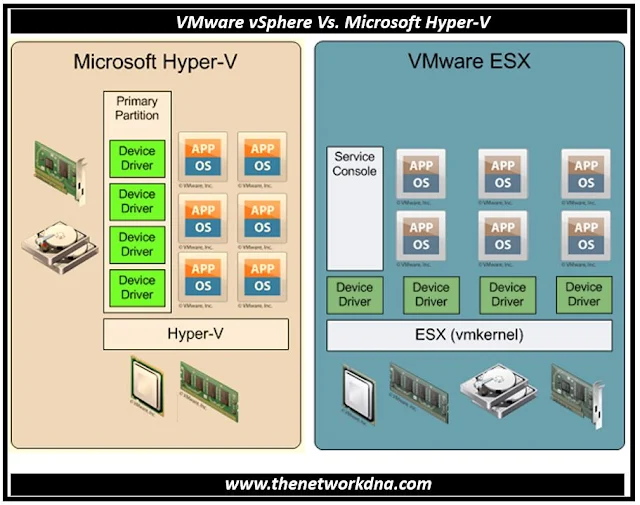VMware vSphere Vs. Microsoft Hyper-V for Your Virtualization Needs
Server virtualization is currently a popular trend in the market. Instead of using physical architecture in their infrastructure, enterprises are now required to use virtual equipment. Businesses such as Cisco, Juniper, and Huawei collaborate with suppliers of virtualization services.
Now since we've discussed virtualization, let's discuss the history of server virtualization. The operating system utilized for virtualization is what we'll talk about in this post. You can virtualize your various workloads or apps on X86 servers.
We will also talk about a comparison of the different providers of virtualized platforms for hosting different kinds of applications or services on servers with X86 architecture. VMware (now Broadcom), a significant player that you are all familiar with thanks to its "vSphere" technology. Are you aware that there are other companies in the market offering the same virtualized platform that serves as the application's host?
 |
| Fig 1.1- VMware vSphere Vs. Microsoft Hyper-V |
We have players like Microsoft- Hyper-V; OpenStack; KVM by Redhat; XenServer- Citrix are some of the major players in the market today.
VMware vSphere:
Most of the industries are using the VMware vSphere( Hypervisor) in their infrastructure for the virtualization. It is one of the most successful player in the market. vSphere helps you get the best performance, availability, and efficiency from your infrastructure and applications.
It’s the ideal foundation for any cloud environment. Simplify data center operations, increase business efficiency, and decrease both CapEx and OpEx costs through virtualization.
With the help of VMware vSphere you can take control of resource management and able to load balance workloads and prioritize access to resources to ensure top performance for your most important applications. VMware vSphere is rapidly provision and deploy workloads in your virtual environment. With the help of it you can simplify your big data infrastructure management while making it more cost effective. VMware is the best platform for big data just as it is for traditional applications.
VMware vSphere and vSphere with Operations Management can be purchased either through an all-in-one kit or a la carte editions. Kits are all-in-one offerings that deliver all the necessary licenses and features/functionality required to get virtualization running in an environment. Editions are a la carte offerings generally designed for larger or specific IT environments with a broader set of requirements.
Microsoft come up with the hypervisor in the server virtualized space and the name is Hyper-V. So you can run workloads on Hyper-V, then easily migrate them from on-premises to a Windows Server virtual machine in the cloud.
You can upgrade Hyper-V and Scale-out File Server clusters to Windows Server 2016 without worrying about downtime for your application or workload. Based on the cloud strategy of the Microsoft, it can support existing and cloud application workloads to solve more than infrastructure issues and deliver a long-term business strategy. With the help of Microsoft Hyper-V, you can deploy storage and networking capabilities.
With Microsoft Hyper-V, choose your hyper-converged or disaggregated deployments based on your needs. I am not sure about it as Microsoft says that it can Lower your total cost of ownership compared to VMware by using a proven platform with native capabilities.
Let's see the comparison between both of these platforms in the table provided









